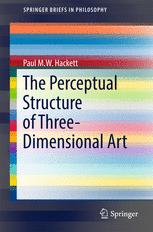

Most ebook files are in PDF format, so you can easily read them using various software such as Foxit Reader or directly on the Google Chrome browser.
Some ebook files are released by publishers in other formats such as .awz, .mobi, .epub, .fb2, etc. You may need to install specific software to read these formats on mobile/PC, such as Calibre.
Please read the tutorial at this link: https://ebookbell.com/faq
We offer FREE conversion to the popular formats you request; however, this may take some time. Therefore, right after payment, please email us, and we will try to provide the service as quickly as possible.
For some exceptional file formats or broken links (if any), please refrain from opening any disputes. Instead, email us first, and we will try to assist within a maximum of 6 hours.
EbookBell Team

4.4
22 reviewsThis book deals with philosophical aspects regarding the perception of spatial relationships in two and three-dimensional art. It provides a structural understanding of how art is perceived within the space created by the artwork, and employs a mapping sentence and partial order mereology to model perceptual structure. It reviews the writing of philosophers such as Paul Crowther and art theorists such as Krauss to establish the need for this research. The ontological model established Paul Crowther is used to guide an interactive account of his ontology in the interpretations of the perceptual process of three-dimensional abstract art to allow the formulation of a more comprehensive philosophical account. The book uniquely combines structuralist and post-structuralist approaches to artistic perception and understanding with a conceptual structure from facet theory, which is clarified with the help of a mapping sentence and partial order mereology.